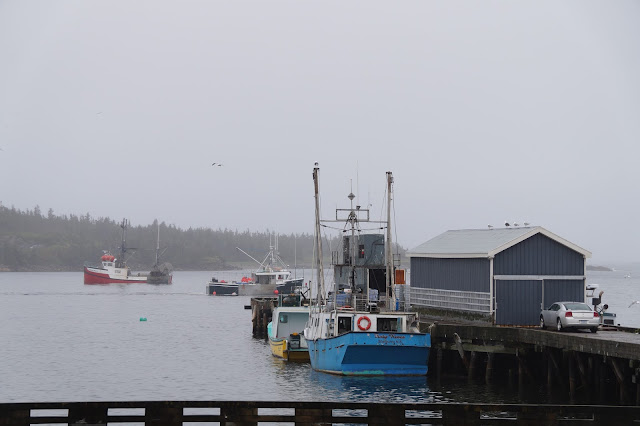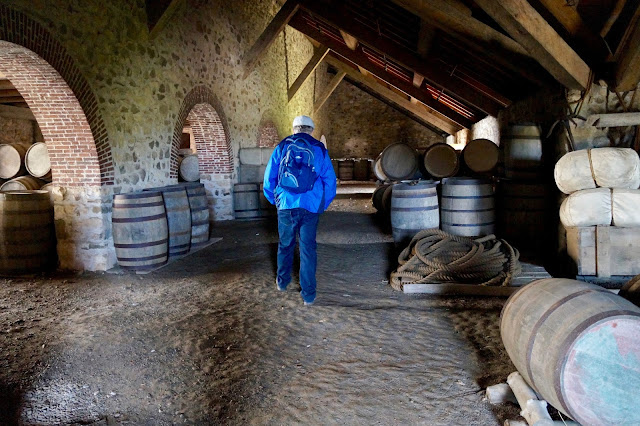We had allowed ourselves six weeks in the Maritimes. We
spent half of that in Newfoundland and now had to decide where we would spend
the rest of our allotted time. We chose some Nova Scotia highlights and hope
that we will return to see more of the province.
Bluenose II was a
must. When we arrived in Lunenburg, Bluenose II was out on sea trials after some
maintenance. While we waited for her return we explored the sea life in the
aquarium at the Fisheries Museum of the Atlantic. This mussel was flexing its
muscle in Ralph’s hand.
Capt Fogg pointed us towards the history of the vast fish
stocks of the northwest Atlantic Ocean.
This resource has been exploited for more than five hundred
years, making the bank fishery one of Canada’s oldest industries.
This model of the Bluenose gave us an inkling of the majesty
of the sailing ships.
When we emerged from the museum Bluenose II had docked early
so we didn’t see her sail into port. She is a beautiful schooner and a Canadian
icon.
When we viewed the lighthouse at Peggy’s Cove it felt like standing on the edge of the world.
The size of waves is determined by wind strength and the distance it blows over open water,
uninterrupted by land. These waves may
have travelled for days from the deep waters of the Atlantic.
The village of Peggy’s Cove is still an active fishing
community.
September 2nd, 1998 Swissair Flight 111 crashed into St. Margaret’s Bay about 8 km from
Peggy’s cove. All 229 passengers and crew perished.
The first rescue resources to approach the crash site were
mostly privately owned fishing boats that operated out of Peggy’s Cove,
Bayswater and other harbours on St. Margaret’s Bay.
At the request of family and community members, the quiet,
modest memorials are consistent with the coastal environment.
The memorials form a line of sight to the crash site.
We enjoyed lunch on a favorite local patio.
Halifax Citadel
is a physical reminder of Canada’s transition from colony to nation.
From Halifax’s founding in 1749, the fortifications of
Citadel Hill have been vital to the defense of Halifax and its Naval Station.
The Citadel played a crucial role in protecting Halifax against French,
American and German threats.
Today the Citadel overlooks modern Halifax.


























































